After many months of discussion, Gus and I finally set out on one of our most anticipated trips of 2018; Carrifran Wild Wood. Carrifran is a site in the southern uplands of Scotland, in the Scottish Borders County. Carrifran Wild Wood is an on-going ecological restoration project which is looking at the establishment and expansion of native woodland and vegetation cover. This project is managed by the borders forest trust and was first established in 2000; it has been coming on leaps and bounds since.
One of the aims of the carrifran project is to create a natural woodland and montane ecosystem, similar to what was present around 6000 years ago. Sadly in the last 6000 years, human intervention has lead to the degredation and loss of many of our native woodland and upland habitats. This is from the introduction of sheep, grouse, farming and other factors such as the loss of our keystone predator species including the Eurasian Lynx (Lynx lynx) and Wolf (Canis lupis). Currently, much of our uplands are ecologically barren with un-naturally high numbers of grazing species i.e sheep and deer. Mis-management of our uplands also play a massive factor in this issue as most of our uplands are managed for Red Grouse (Lagopus lagopus scotica) which involves the systematic burning of heather which limits growth of any other species. Another factor is the introduction of sheep which munch and nibble at anything that tries to establish; this creates a unique habitat called MAMBA (Miles and Miles of Bugger All). Anyway, all of these factors ensure that much of our uplands are void of species rich vegetation and dense tree cover. However the Carrifran project is the total opposite from the current cultural traditions of our uplands. As soon as you arrive in the car park, you know you are somewhere special.

As you take your first steps into the glen you are greeted with a welcome site of rich vegetation and a plethora of establishing native trees; something that has become a bit of a scarcity in Scotland. Walking through the glen on the valley floor is a pleasant experience, on each side of you are hills which rise to around 600-750m. On these hills are expanses of established trees that are spreading upwards towards the tree-line. The main tree species that is dominating Carrifran currently is the Downy Birch (Betula pubescens). This pioneering tree species is normally the first to colonise woodland areas and has certainly made a mark in the Carrifran glen. Other tree species that are present in good numbers around the glen is; Blackthorn (Prunus spinosa), Sessile Oak (Quercus petrea), Rowan (Sorbus acuparia), Ash (Fraxinus excelsior) Holly (Ilex aquifolium), Hazel (Corylus avellana), Alder (Alnus glutinosa) and Aspen (Populus tremula).


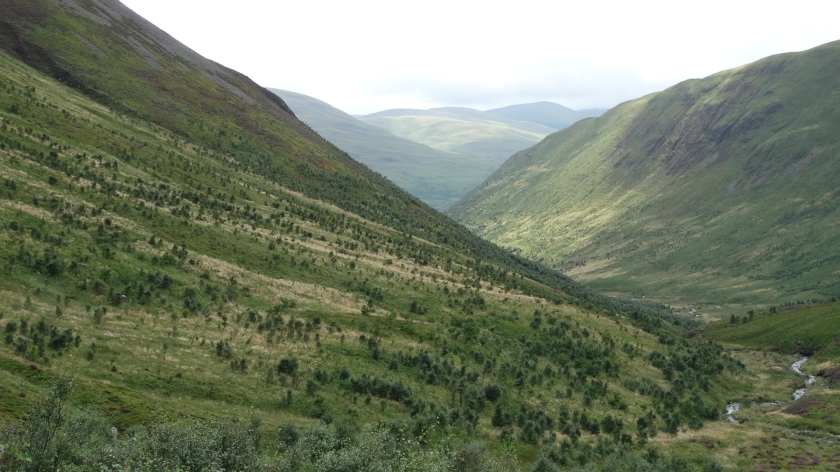
To date, volunteers from the borders forest trust has planted over 500,000 trees in the glen. That’s a lot of hard work, but when you look at the ecological change that is occurring and the rich tree cover that is starting to develop, it is all worth it!

It is not only trees that are being planted; healthy woodland and montane ecosystems should also contain a shrub layer. They have planted shrub vegetation at Carrifran most of which being different species of Willow (Salix) and Juniper (Juniperus communis). We identified 8 different species of Salix as we ascended up the corrie; Salix lapponum, S. herbacea, S. cinerea, S. caprea, S. myrsinifolia, S. viminalis, S. pentandra and S. aurita. In English names that is Downy, Dwarf, Grey, Goat, Tea-Leaved, Osier, Bay and Eared Willow. Quite a selection! Most of these will have been planted although I imagine Dwarf Willow (Salix herbacea) will have occurred naturally.

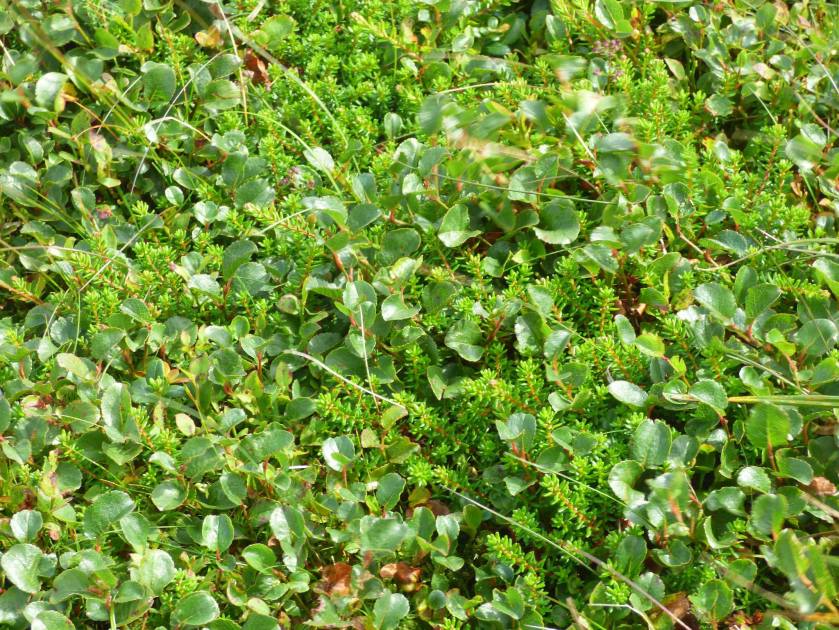
For all you habitat enthusiasts out there as we walked from the Car Park up into the heart of the Glen and to the back corrie called Firthhope Rig we identified and passed through a number of NVC (National Vegetation Classification) type habitats. This included; Upland Oak-Birch Woodland (W11), Birch Woodland (W4), Juniper, Birch-Rowan Woodland (W19), General Upland Broad-leaved Woodland (W7 & W9) and my favourite which was the Upland Oak-Birch Woodland with Holly, Hazel and Juniper (W17).
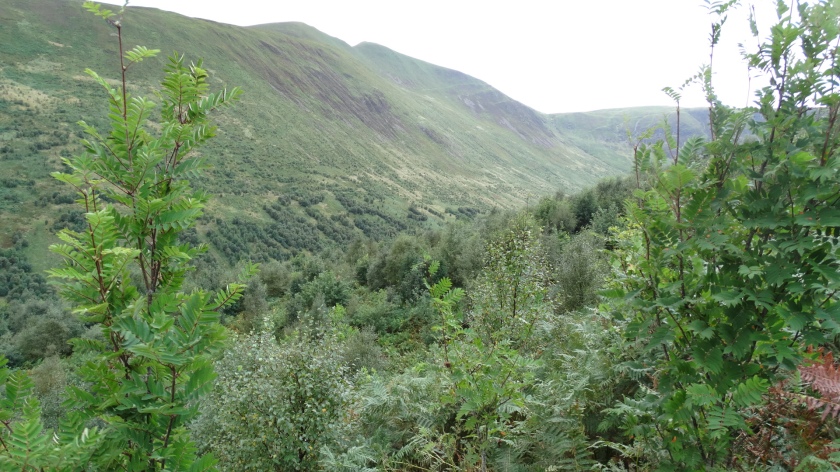
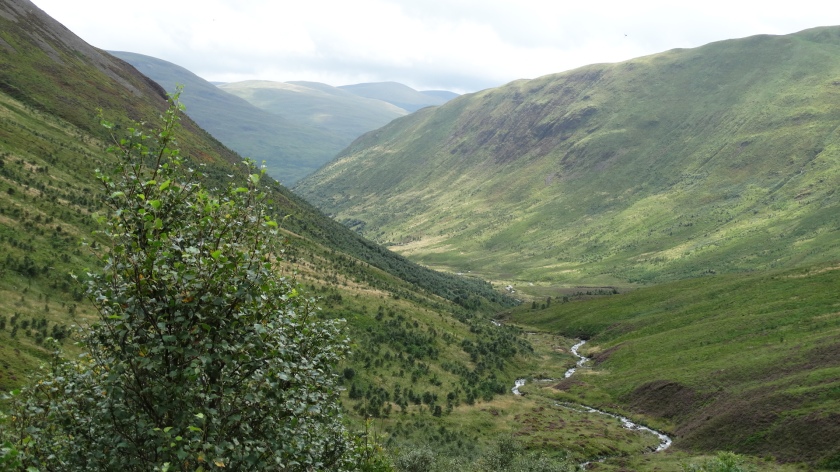
As we ascended up the face of the corrie, we noticed a change in the vegetation under foot. We were currently walking through the species poor Molinia caerulea/Potentilla erecta (M25a) habitat. This was a grassy, ‘knolly’ habitat with little of flowering/vegetation interest, but then it started to transition into a more ‘dwarf shrub heath’ habitat with Vaccinium and Salix species starting to become more abundant. This was a welcome change as I wasn’t sure my knees and ankles could handle the grassy knolls anymore… this dwarf heath shrub is starting to succeed over the M25 habitat as the vegetation is being allowed to flourish now that large herbivores have been removed
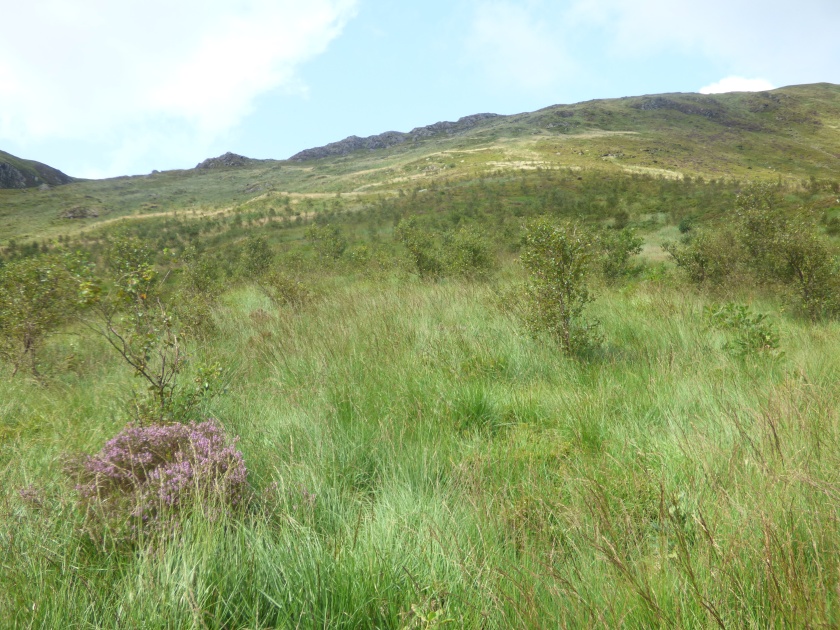
As we ascended to around 600m the trees disappeared and gave way to the ‘dwarf shrub heath’ habitat. Blaeberry (Vaccinium myrtillus), Cowberry (Vaccinium vitis-idaea) and Crowberry (Empetrum nigrum) were more abundant here and provided a tasty snack while we ascended the 350m Corrie.
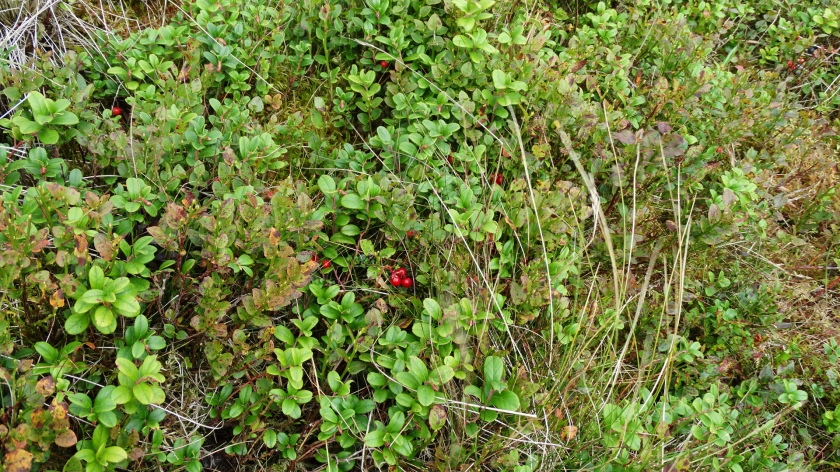

As we stopped to have a rest near the top of the corrie, we noticed a peregrine that was having a tussle with another bird. This other bird was a Black-Headed Gull (Chroicocephalus ridibundus) that happened to wander into the peregrines territory. This did not end well for the Black-Headed Gull and we got some amazing views of a peregrine hunting and capturing its prey. It then flew off into the distant with this dead gull hanging from its talons – isn’t nature cool af?
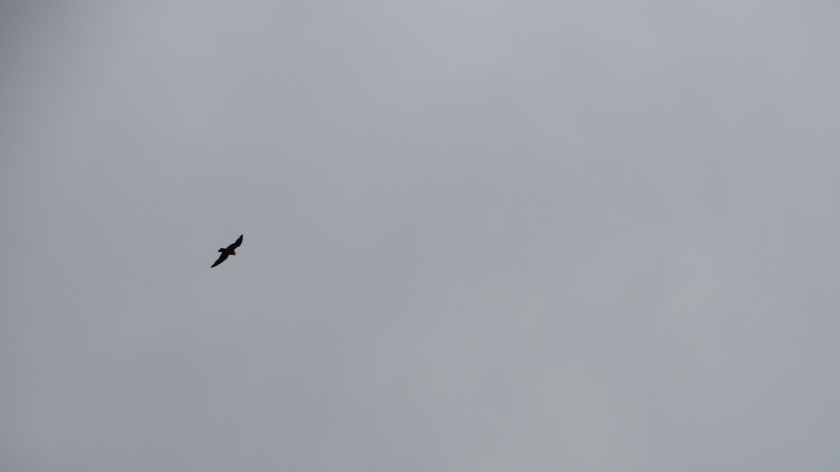
We then reached the top of the corrie and traversed along the corrie ridge looking at plants and vegetation along the way. The vegetation here was not as rich as further down the slopes but there were still some flowers to be spotted such as Starry Saxifrage (Saxifraga stellaris) and Thyme (Thymus polytrichus).

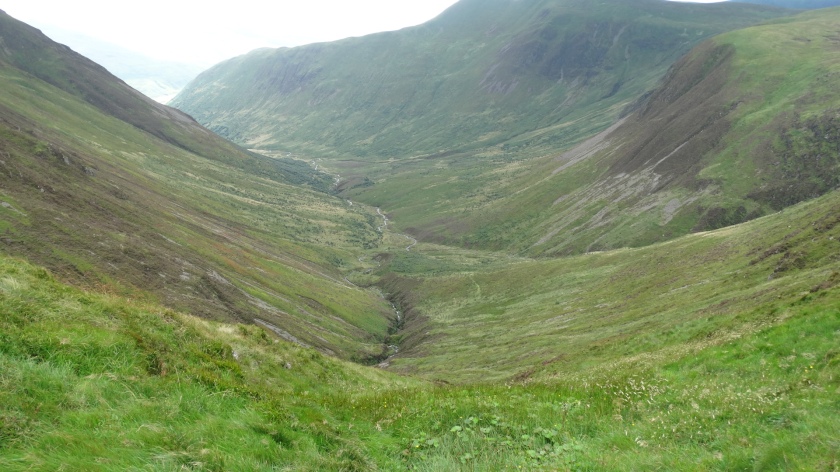
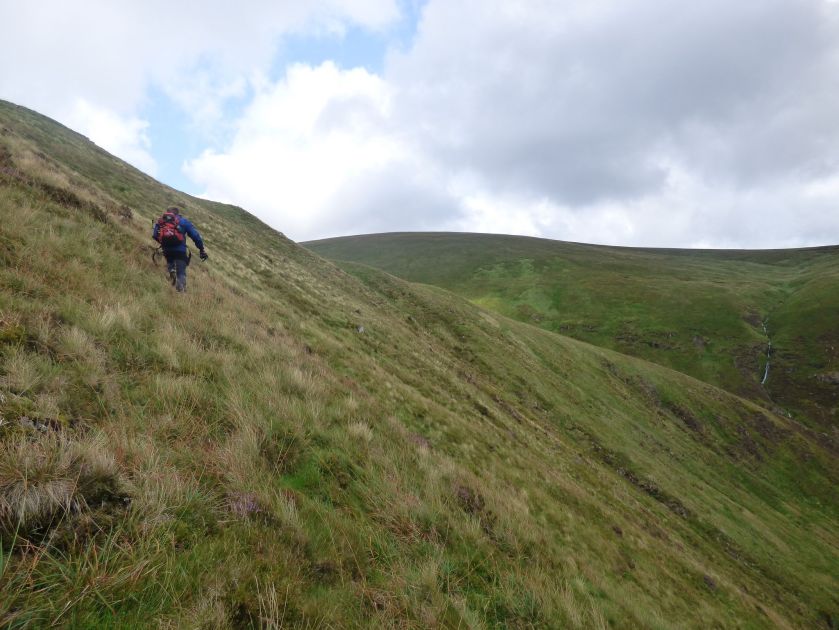
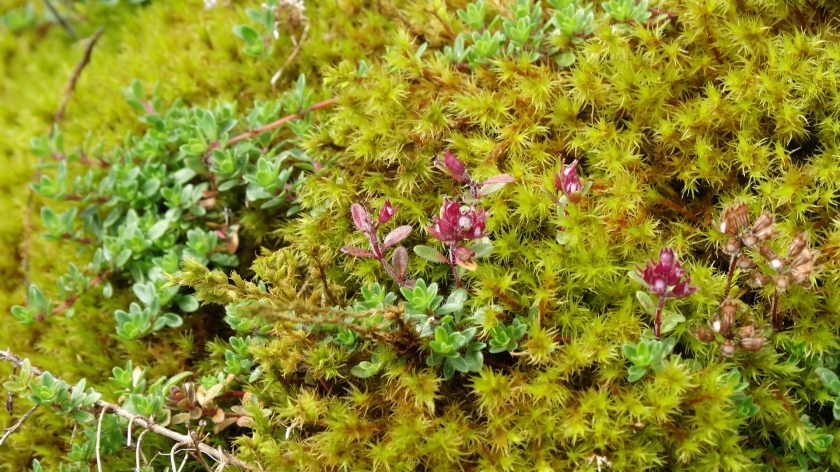
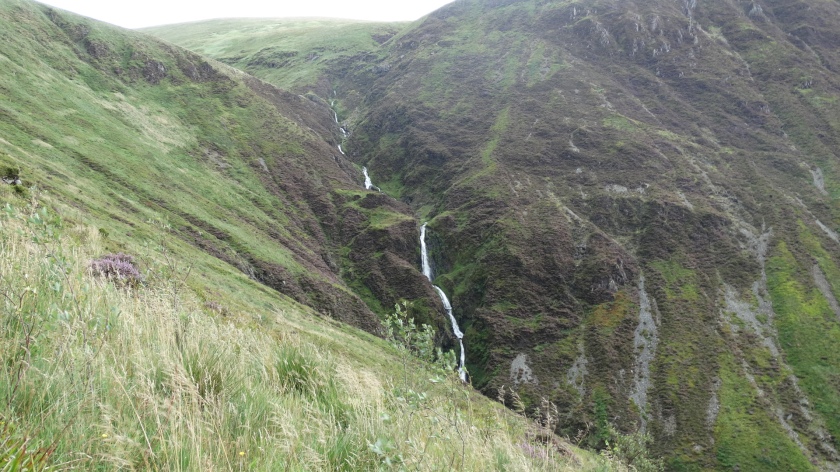
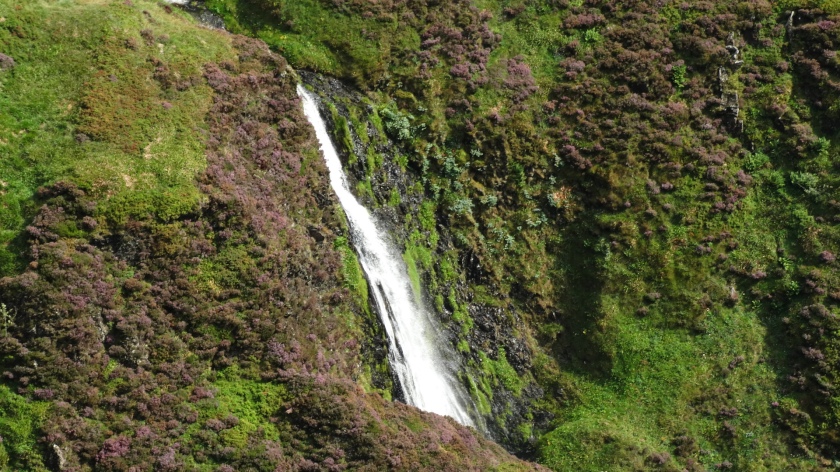
One thing that was very apparent as we reached the top of the corrie and worked our way south onto the Carrifran Gans at 750/800m was the wind! It was gusting around 90-100mph and at one point the waterfall was falling up the hill…It was actually so windy that it was hard to breathe and that a short while after we descended I was slightly deaf. It was a proper cool experience and it made sure that I felt alive and present.
The vegetation was not as rich at this altitude although there were some very nice species rich flushes and calcareous grasslands. The plateau of the hills gave some nice views of the glen and surrounding areas;
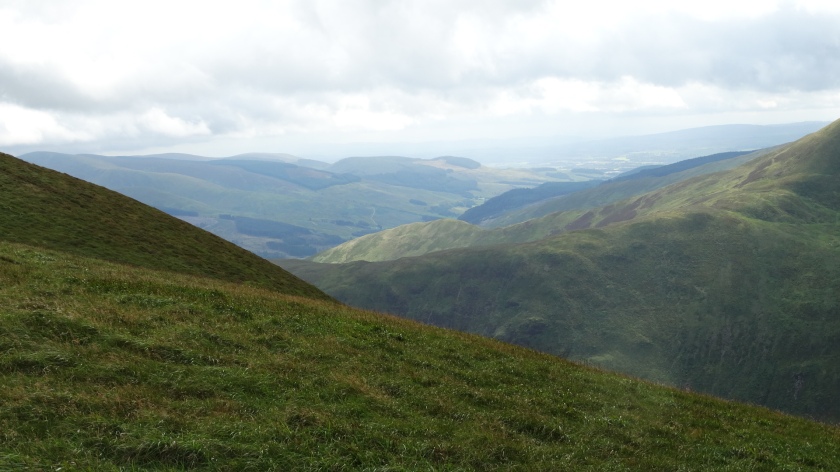
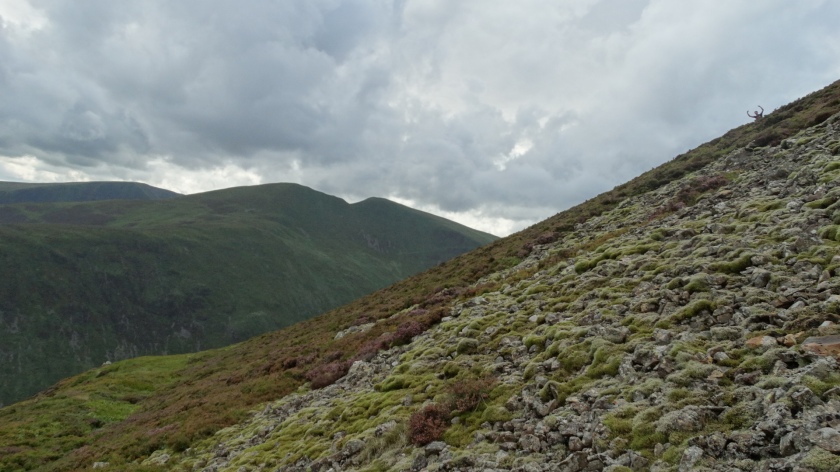
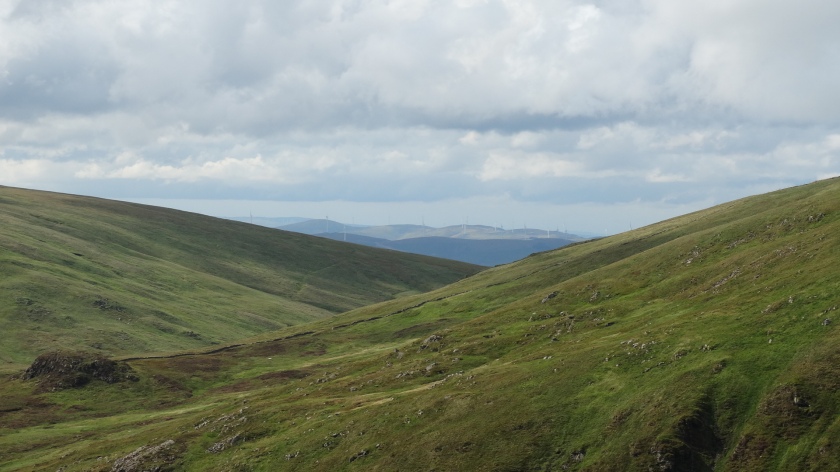
As we descended from the top of the extremely windy Carrifran Gans, I was excited again to return back into the shelter of the expanding tree line. However the route down was extremely steep and once again I’d meet my enemy – (M25a) the knolly, grassy and arseholey habitat.
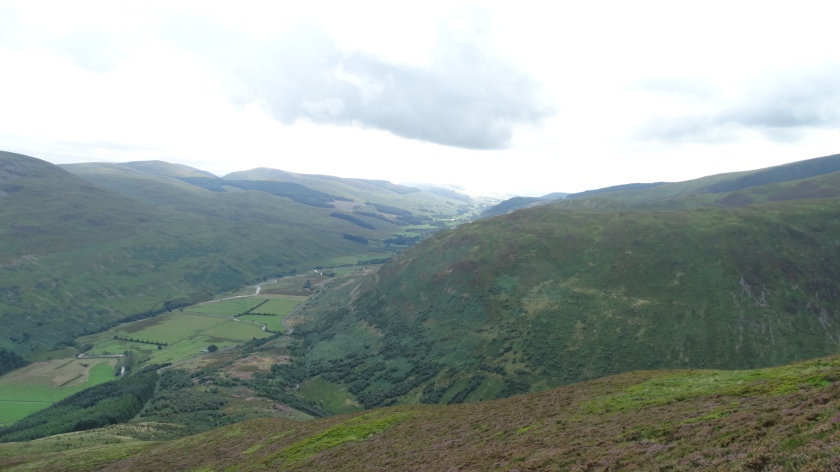

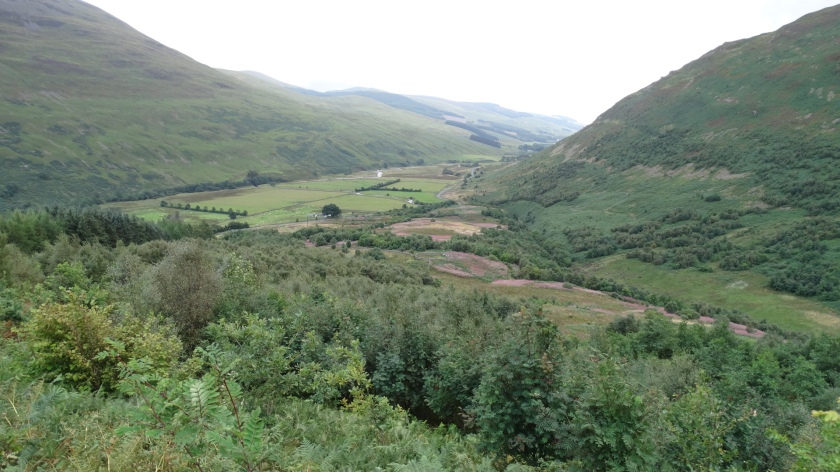
As we headed back into the treeline with sprained ankles and knobbly knees, it was encouraging to walk through the recently planted and established woodlands that will soon provide seed for the rest of the trees that will habituate the glen. This is true ecological restoration at its finest. From what we observed the grazing pressure in the glen seemed to be low, trees were growing well with little sign of browsing from deer and the vegetation was high and flourishing. All of this seemed to be occurring without the need of a deer fence, so presumably the deer are well managed in the Carrifran area? It will be something that I will investigate.
I cant help but feel optimistic about the future of Scotland’s uplands when great projects such as Carrifran are being undertaken. A project like this shows the potential that Scotland’s uplands can become; we need to see more of Scotland’s glens becoming re-forested with native species. Woodland’s like Carrifran can have so much more benefits than biodiversity and wildlife alone. Native Woodland’s can prevent flooding, improve mental and physical health, retain soil, clean the air, safeguard species and create enjoyment in peoples lives. I for one cannot wait to return to Carrifran, I have hopeful visions of what it will transform into 30 years down the line. Even now as a newly established project, it is a truly amazing place with so much interesting flora and habitats. Carrifran is definitely one of my favourite places in Scotland, and I will return as soon as I can.


For more information on the Carrifran Wildwood Project, visit here; http://www.carrifran.org.uk/
Peace. x


One thought on “Tales of the Wild Wood; Carrifran”